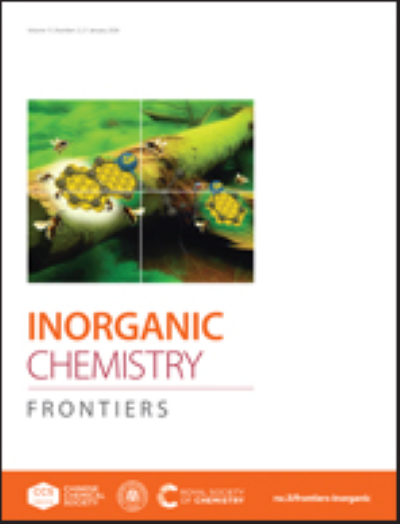Strategic Pathway Selection in Photocatalytic Degradation: Roles of Holes and Radicals
IF 6.1
1区 化学
Q1 CHEMISTRY, INORGANIC & NUCLEAR
引用次数: 0
Abstract
As global resource and environmental issues become increasingly severe, photocatalytic technology for efficiently and cleanly degrading pollutants has become a trend in development. Radical degradation pathways are highly regarded due to their wide application and efficiency in handling pollutants. Comparatively, direct oxidation by holes exhibits unique advantages in dealing with specific types of pollutants, and both degradation pathways have their own characteristics and strengths. However, past research on pollutant degradation has mainly focused on radical degradation, with little recognition of the role of direct hole oxidation in pollutant degradation, and there has been a lack of attention to the transition between the two pathways. This has made it difficult to select the most effective degradation strategy for different types of pollutants. To fill the cognitive gap in photocatalytic degradation pathways and break the predicament of blindly dealing with pollutants, the characteristics of these two oxidation pathways and their transition mechanisms are systematically explored. Additionally, this study provides the first summary of which types of pollutants are suitable for degradation by holes and radicals, respectively. This paper offers a clear basis for selecting the most appropriate photocatalytic strategy according to the characteristics of different pollutants and reaction conditions, aiming to enhance researchers' understanding of pollutant degradation and promote the development of environmental management technology towards higher efficiency and precision.光催化降解过程中的战略途径选择:孔洞和自由基的作用
随着全球资源和环境问题日益严峻,高效、清洁地降解污染物的光催化技术已成为一种发展趋势。自由基降解途径因其广泛的应用和处理污染物的效率而备受推崇。相对而言,空穴直接氧化在处理特定类型的污染物方面具有独特的优势,两种降解途径各有特点和优势。然而,以往对污染物降解的研究主要集中在自由基降解方面,对孔洞直接氧化在污染物降解中的作用认识不足,对两种途径之间的转换也缺乏关注。这使得人们很难针对不同类型的污染物选择最有效的降解策略。为了填补人们对光催化降解途径的认知空白,打破盲目处理污染物的困境,本研究系统地探讨了这两种氧化途径的特点及其转换机制。此外,本研究还首次总结了空穴和自由基分别适合降解哪些类型的污染物。本文为根据不同污染物的特点和反应条件选择最合适的光催化策略提供了明确的依据,旨在加深研究人员对污染物降解的理解,推动环境治理技术向高效、精准的方向发展。
本文章由计算机程序翻译,如有差异,请以英文原文为准。
求助全文
约1分钟内获得全文
求助全文
来源期刊

Inorganic Chemistry Frontiers
CHEMISTRY, INORGANIC & NUCLEAR-
CiteScore
10.40
自引率
7.10%
发文量
587
审稿时长
1.2 months
期刊介绍:
The international, high quality journal for interdisciplinary research between inorganic chemistry and related subjects
 求助内容:
求助内容: 应助结果提醒方式:
应助结果提醒方式:


